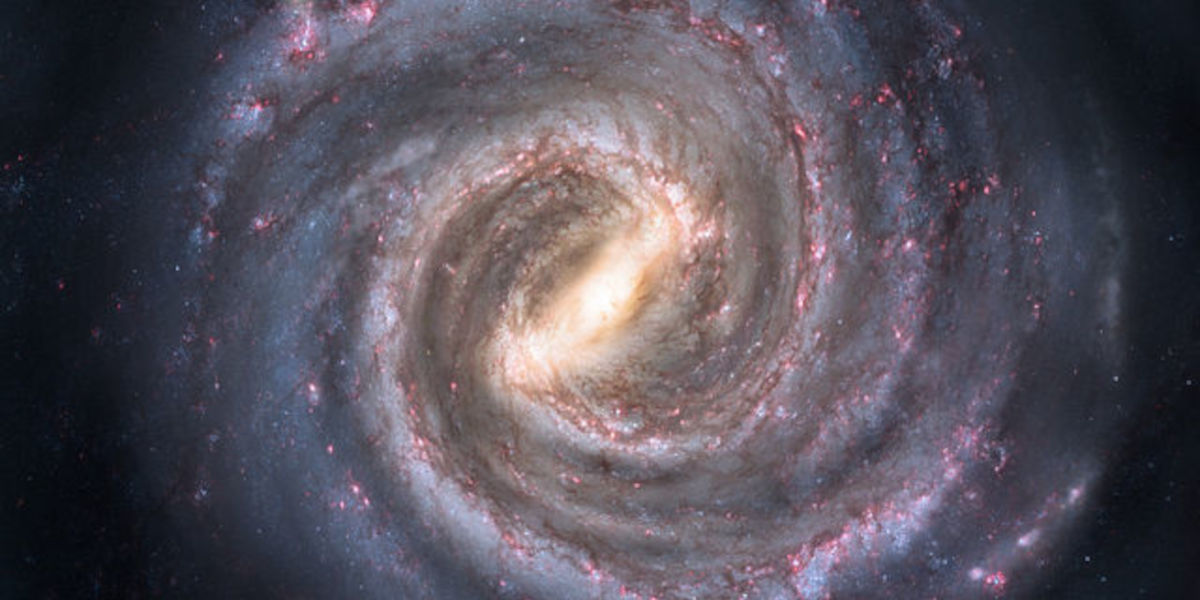If you've felt a sense of unease, questioning what surrounds us in the cosmic night sky; you're not alone. The universe is not just what we see with the naked eye or even through our most powerful telescopes. A significant part of our universe consists of an elusive substance named 'Dark Matter.' So what is this baffling concept that stumps scientists and enthusiasts alike? Get ready for dark matter explained!
Over the past several decades, the 'evidence for dark matter' has managed to stack up quite impressively. Yet, despite the growing mound of indirect evidence, we're still in the process of directly detecting this elusive cosmic ghost. We have evidence of dark matter's existence in abundance, perhaps a bit too much. Ironically, what we don't have is the matter itself, leading to the quintessential question, 'Can We Detective Dark Matter Directly?' which serves as the backdrop of our exploration today.
Dark Matter Explained
When it comes to the cosmos, we understand a lot but also, a little. We identify countless galaxies, planets, black holes, and other celestial phenomena that make up the fabric of our universe. Yet we also know that these celestial bodies and their radiations account for about only 5% of the universe. So what forms the rest of it? This is where our ghost of the cosmos, the Dark Matter, and its equally inexplicable counterpart, Dark Energy, step in.
Dark matter is the invisible, untouchable, yet incredibly massive entity that occupies around 27% of our universe. It doesn't interact with our electromagnetic spectrum, making it indiscernible through traditional means. This has led us to an interesting conundrum, how do we study something we can't see or even touch?
Evidence for Dark Matter
Evidence for dark matter comes not from its detection but from its impact. The gigantic gravitational effects that cannot be explained by visible matter alone lead us to the theoretical existence of dark matter. It is like sensing a ghost by its whispers rather than its presence. The anomalous speeds at which galaxies rotate and cluster, the bending of light around certain celestial bodies (gravitational lensing), are some of the ways we have come to acknowledge dark matter's existence.
The Cosmic Microwave Background (CMB) radiation, the oldest light we can observe emanated from the universe about 380,000 years after the Big Bang, also lends significant evidence for dark matter. The slight irregularities in the CMB temperature reveal the influence of dark matter's gravitational pull on normal matter.
Can We Detect Dark Matter Directly?
The hunt for the elusive and mysterious component we call "dark matter" is a complex undertaking. Dark matter is believed to account for approximately 85% of the matter in the universe, yet it doesn't interact with electromagnetic radiation and remains elusive to our detection techniques. The idea of dark matter has been around for several decades, and though we have yet to directly observe or detect it, evidence of its existence is abundant.
One early hint of dark matter originated from Swiss American astronomer Fritz Zwicky's study of galaxy clusters in the 1930s. Zwicky discovered a discrepancy between the mass of all the galaxies in the cluster, inferred from their light, and the total mass necessary to prevent those galaxies from escaping the cluster’s gravitational pull. He dubbed this unseen mass as "dunkle materie", or dark matter.
The Mysteries of Dark Matter
Certainly, the mysteries of dark matter pose profound questions. The central mystery revolves around its very nature. What is dark matter made of? Subatomic particles that haven't yet been discovered are a popular candidate. But which ones? The Weakly Interacting Massive Particles (WIMPs) have been a favorite pick among cosmologists, but despite numerous experiments designed to catch these elusive particles, they remain at large.
Another enigmatic question is dark matter's distribution within the universe. Scientists believe that dark matter forms a vast cosmic web, providing scaffolding for galaxies and helping them to grow and evolve. However, we need more precise measurements and simulations to depict this cosmic structure.
Current Experiments
While the enigmas of dark matter continue to challenge our understanding of the universe, numerous experiments are underway worldwide in a bid to unpack these mysteries. Deep underground laboratories, housed in mines or mountains to shield from cosmic rays that could muddy the waters, are waiting for the ever-so-slightest interaction of dark matter particles within their detectors. If successful, these experiments could reveal the identity of these ethereal particles and toss a ray of light onto the dark realm.
Space-based missions like the European Space Agency’s Euclid spacecraft, slated for launch in 2022, aim to create a detailed dark matter map of the cosmos by studying the distortion of distant galaxies due to dark matter's gravitational influence.
The Future of the Quest
The understanding of dark matter essentially represents a final frontier in contemporary cosmology. As daunting as this elusive chase may seem, the pursuit of understanding dark matter represents the very essence of scientific inquiry: the relentless quest for knowledge. Its discovery could unveil new physics, potentially addressing other cosmic enigmas like the nature of dark energy and the evolution of the universe.
As we continue our search for dark matter, we delve deeper into the mysterious cosmos, bound by our innate curiosity and compelling desire to solve the universe's riddles. For now, the ghostly presence of dark matter remains a provocative teaser, sparking human intellect to push the envelope and venture into the cosmic shadows.




